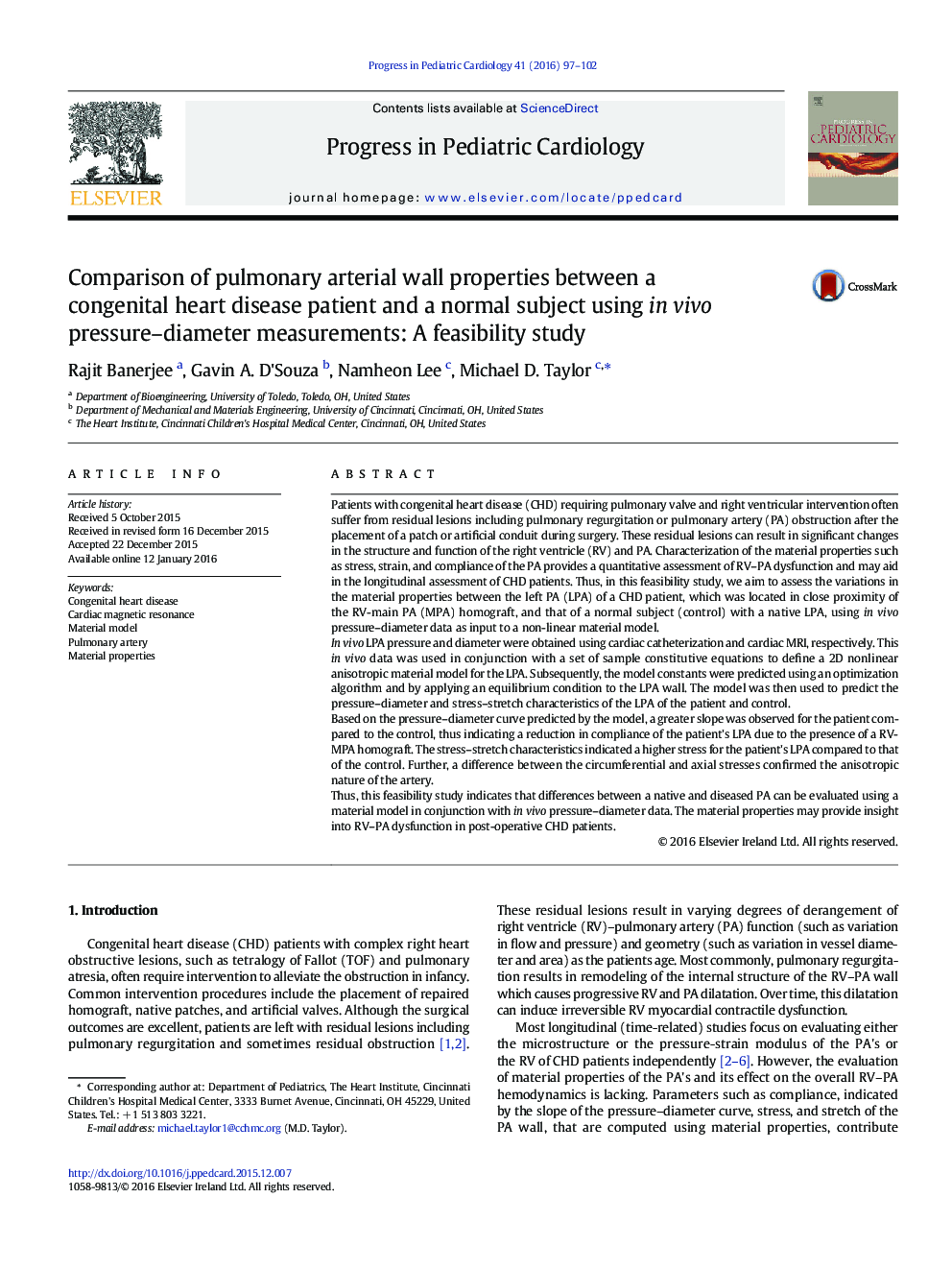| کد مقاله | کد نشریه | سال انتشار | مقاله انگلیسی | نسخه تمام متن |
|---|---|---|---|---|
| 3007280 | 1578932 | 2016 | 6 صفحه PDF | دانلود رایگان |

• The material properties of a normal and abnormal pulmonary artery were evaluated.
• The pressure and diameter were obtained by catheterization and cardiac MRI.
• A non-linear anisotropic model was used to predict the material properties.
• Pressure–diameter characteristics showed lower compliance in the patient artery.
• The method can provide pulmonary artery properties as input for CFD models.
Patients with congenital heart disease (CHD) requiring pulmonary valve and right ventricular intervention often suffer from residual lesions including pulmonary regurgitation or pulmonary artery (PA) obstruction after the placement of a patch or artificial conduit during surgery. These residual lesions can result in significant changes in the structure and function of the right ventricle (RV) and PA. Characterization of the material properties such as stress, strain, and compliance of the PA provides a quantitative assessment of RV–PA dysfunction and may aid in the longitudinal assessment of CHD patients. Thus, in this feasibility study, we aim to assess the variations in the material properties between the left PA (LPA) of a CHD patient, which was located in close proximity of the RV-main PA (MPA) homograft, and that of a normal subject (control) with a native LPA, using in vivo pressure–diameter data as input to a non-linear material model.In vivo LPA pressure and diameter were obtained using cardiac catheterization and cardiac MRI, respectively. This in vivo data was used in conjunction with a set of sample constitutive equations to define a 2D nonlinear anisotropic material model for the LPA. Subsequently, the model constants were predicted using an optimization algorithm and by applying an equilibrium condition to the LPA wall. The model was then used to predict the pressure–diameter and stress–stretch characteristics of the LPA of the patient and control.Based on the pressure–diameter curve predicted by the model, a greater slope was observed for the patient compared to the control, thus indicating a reduction in compliance of the patient's LPA due to the presence of a RV-MPA homograft. The stress–stretch characteristics indicated a higher stress for the patient's LPA compared to that of the control. Further, a difference between the circumferential and axial stresses confirmed the anisotropic nature of the artery.Thus, this feasibility study indicates that differences between a native and diseased PA can be evaluated using a material model in conjunction with in vivo pressure–diameter data. The material properties may provide insight into RV–PA dysfunction in post-operative CHD patients.
Journal: Progress in Pediatric Cardiology - Volume 41, June 2016, Pages 97–102